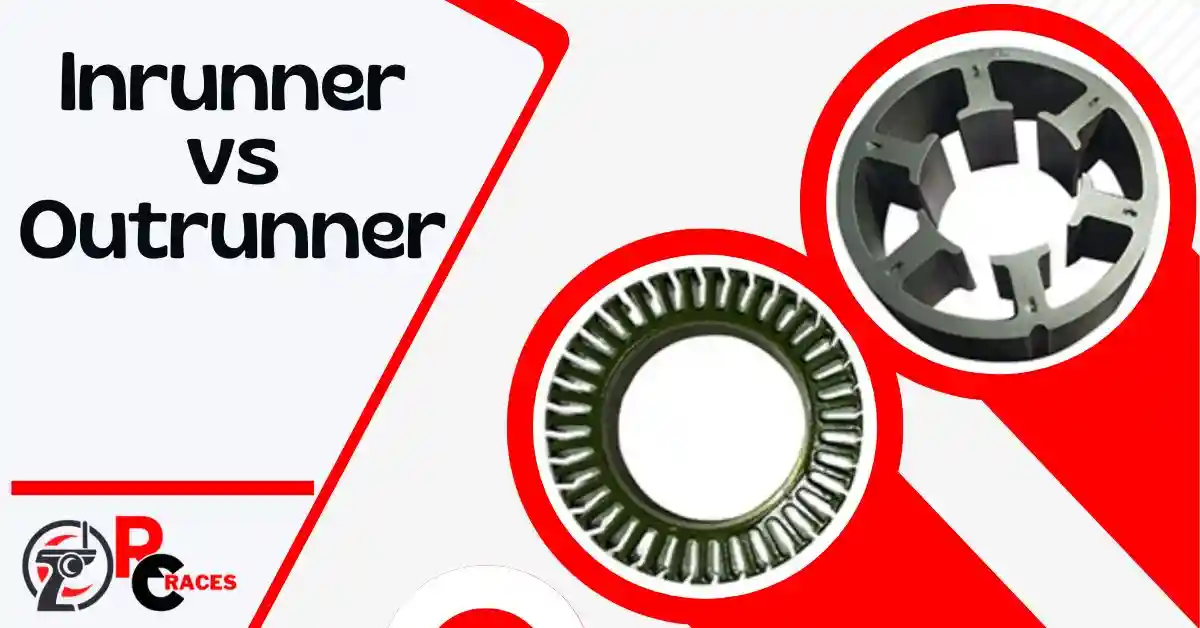Introduction
Getting confused between Inrunner motor and Outrunner motor? There are a lot of differences between these two motos.
Let’s end the battle of Inrunner vs Outrunner here, today.
The inrunner motor gives low accuracy with high efficiency. It produces low torque and has high RPM per volt and heat dissipation (exp: cars, trucks). The outrunner motor offers high accuracy with lower efficiency. It has low RPM per volt and heat dissipation with high torque (exp: drones, planes).
Stick to the end of this article. You will know more about the differences between inrunner and outrunner motors.
Inrunner vs Outrunner: Quick Overview
The inrunner and outrunner motors have a lot of differences from structural to functional. They are the entire opposite of each other.
Take a quick look at the basic differences between the inrunner and the outrunner motor.
| Parameter | Inrunner Motor | Outrunner Motor |
| Accuracy | Low accuracy | High accuracy |
| Efficiency | High efficiency | Relatively lower efficiency |
| Torque | Low torque | High torque |
| RPM (per volt) | High | Low |
| Heat Dissipation | High | Low |
| Gearbox | Required | Not required |
| Noise | High | Low |
| Maintenance | High maintenance | Low maintenance |
| Stator Winding | AC | DC |
| Magnetic poles | Fewer in Number | Higher in number |
| Magnet location | Inside the can | Outside the can |
| Applications | EDF jet, car, truck | Helicopter, airplane, drone |
Inrunner vs Outrunner: Detailed Comparison
The inrunner outrunner difference actually makes in the application of the inrunner and outrunner motor. But there are various reasons why we have different kinds of applications for both motors.
Accuracy
The precision of the engine directly affects the precision of the motor. That’s why accuracy is something we need to look into while thinking about motors.
The inrunner motor has relatively low accuracy. In contrast, the outrunner motor has relatively high accuracy.
Torque
When discussing a motor, torque is one of the most essential. Because it represents the amount of load that an engine can handle. There is a suggestive difference in inrunner outrunner torque.
The resistance of a brushless motor is measured using a multimeter. Resistance is inversely proportional to torque.
The Inrunner motor generates a low amount of torque. But the outrunner motor generates relatively high torque.
Efficiency
Efficiency is directly related to inertia. The relation between inertia and efficiency is disproportional. That means the motor that has low inertia will have higher efficiency.
You might wonder what is the inrunner vs outrunner efficiency.
The Inrunner motor has low inertia. That’s why its efficiency is relatively higher.
On the other hand outrunner, the motor has low efficiency. Because it has higher inertia.
Structure
Structure is a very good point to differentiate both motors. The rotor of an inrunner motor is inside the stator. Though the stator windings stay fixed, the rotor rotates.
The inrotor has an identical size to the outrotor.
On the other hand, the rotor of an outrunner motor is placed outside the stator. Torque arms and air gap surface are comparatively larger.
Magnets are placed inside the rotor. The propeller is attached to the shaft.
RPM (per volt)
Outrunner has a low RPM per volt. Because high RPM needs more magnets. It can slow down the speed. That’s why we get limited RPM from the outrunner motor.
On the other side, RPM per volt is comparatively high in inrunner motor.
Heat Dissipation
Heat dissipation is a very important factor of a motor. In the inrunner motor, all the magnets are placed inside the winding. This means more heat dissipation occurs here.
As a result, the inrunner motor stays cooler for a longer time.
On the other hand, the heat is transferred to the core in the outrunner motor. The core is in the center.
So, going to the shafts is the only way to get heat. That’s why the motor gets heated very fast.
Gearbox
The function of a gearbox in a motor is to increase the amount of torque. By other means, we can say it reduces the speed.
The amount of torque is low in the inrunner motor. That’s why a gearbox is required for this motor.
The outrunner motor doesn’t require any gearbox. Because it already generates relatively high torque.
Magnetic poles
The inrunner motor has lower air-gap flux. That says the number of magnetic poles in the motor is fewer. More flux is created through the yolk.
The air gap flux is higher in the outrunner motor and less flux in the yolk. It is because a higher number of magnetic poles are present
Maintenance
Usually brushless inrunner outrunner motors require very little maintenance. Their performance can get bad if they are not cleaned or inspected very often.
For optimum performance, regular maintenance is required. Besides, the inrunner motor needs high maintenance compared to the outrunner motor.
Outrunner motors repairing might be needed though.
Noise
Motor generally creates noise while functioning. A noisy motor causes sound pollution and is very irritating.
The inrunner motor creates a lot of noise. But the outrunner motor is very silent.
Stator Winding
Stator winding is basically an arrangement of coils in the electrical circuits in a stator. There is an AC stator winding in an inrunner motor.
But the outrunner motor has DC amateur winding. The work of an amateur winding is to generate shaft torque.
Application
Application is a very important thing to discuss. Particularly while discussing the inrunner and outrunner motor. Because this is where everything gets cleared up.
Both the motors are brushless and brushless motors are used in RC boats. But the sizes need to be considered since these have a very specific sector to be used at.
The inrunner motor is used where high speed is required. That means cars, trucks, EDF jets, speed boats etc vehicles use the inrunner motor.
However, the outrunner is used when there is a need for strong torque. Airplanes (3D), trainer planes, helicopters, drones etc use outrunner motors in their engine.
| Product 1 | ||
| Product 2 |
Who Wins The Battle?
Both the inrunner and outrunner motor has a lot of sectors where they are different. But in the end, it is very hard to declare one of them the winner.
Because everything mainly depends on the application of the motors. The application fields are very much different for both motors.
It is very obvious that if you mix up the application sectors. By that, you won’t be able to get the perfect result. It will even gravely affect the performance of your vehicle.
You need to invest a suggestive amount of time into their maintenance. You will then undoubtedly be able to achieve the greatest results.
FAQs
What is a brushless engine?
A Brushless engine doesn’t operate with the help of mechanical brushes. That is the main feature that is special for brushless engines.
Also, the DC electrical motor has specific advantages over brush motors and has economical values.
What do the numbers mean on brushless motors?
Numbers mentioned in the brushless motors are configuration numbers and rotor numbers. The configuration number tells us the number of electromagnets on the stator. Numbers on the rotor give us the number of permanent magnets.
What’s the difference between a brushed and brushless motor?
The power source is the primary distinction between brushless and brushed motors. Brushed motors are driven mechanically, whereas brushless motors are electrically driven.
You’re All Set!
Hope this discussion helped you with your doubt about inrunner vs outrunner. We appreciate your commitment to reading the entire article.
What kind of motor does your car have? Comment below with your thoughts and let us know.
Enjoy your day!


